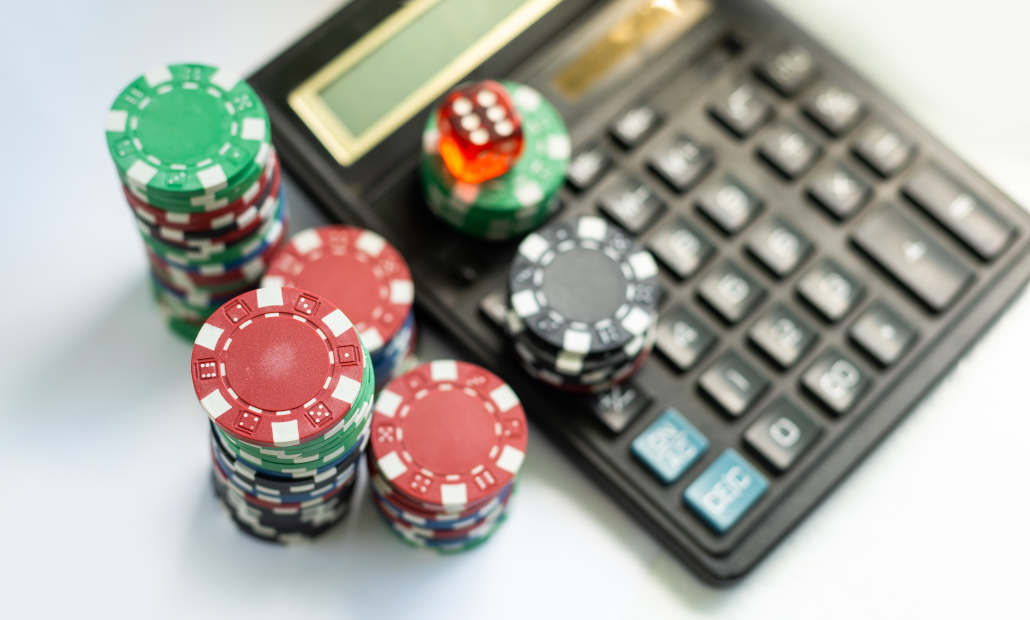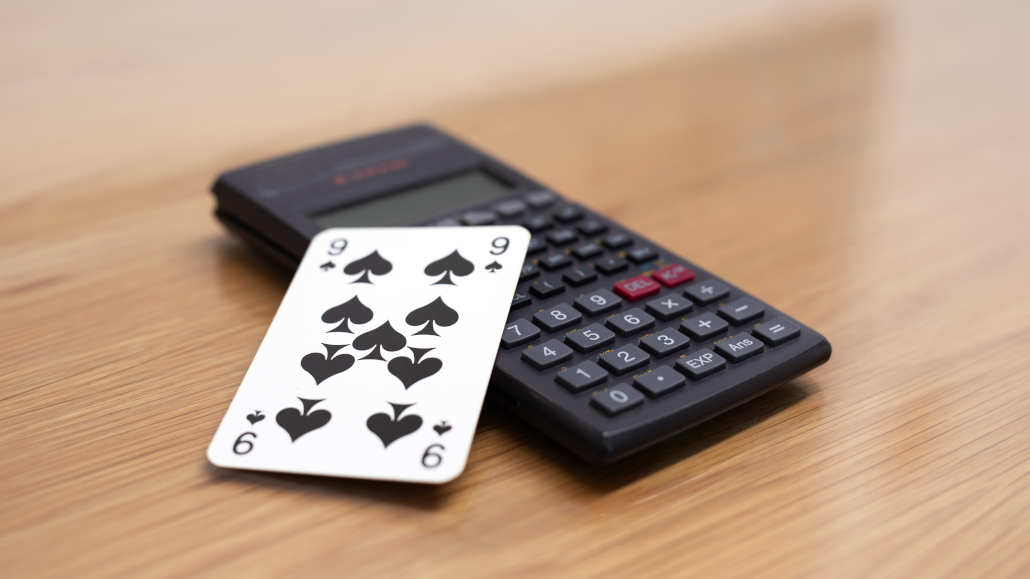What Is Equity in Poker and How to Calculate It

8 minutes
Last Updated: February 4, 2023
If you are just starting out with poker or are pretty familiar with the game but have never truly understood the importance of equity in poker, you are at the right place.
We will answer some of the questions you might have about the subject including the most important one: what is equity in poker.
Poker equity is the portion of the pot that the players in the hand are entitled to in the long run based on their odds of winning the hand.
Don’t worry, we know that the definition alone can sound confusing. Thus, we will break down some of the most important things related to equity, including how to calculate equity in poker, later in the article.
What Is Equity in Poker?
The first thing that we need to get right out of the way when it comes to poker equity is that you can’t be a winning poker player in the long run if you don’t know how to apply this concept.
There are many poker players out there that base their decisions on their “gut feeling,” but this is not how winning poker is played.
Now let’s get back to poker theory.
In poker, players use the term equity to describe what percentage of the pot belongs to them in a specific situation based on their chances of winning the pot.

Poker Equity Examples
Here are two examples of equity, one from everyday life and one from poker.
Let’s say that two people buy a cake, but they get into the argument and decide to flip a coin to decide who will get to eat the whole cake.
Before they flip the coin, each of them has a 50% chance of getting the whole cake. This means that each of them has 50% equity in the cake.
Now that does not mean that each time they throw the coin they will get their fair share of the cake. One of them will run 50% below equity and lose his rightful share while the other one will run 50% above his equity and win more than he is entitled to.
Now imagine a situation at the poker table where there are $100 dollars in the pot, two players are all in, they flip their cards over and they both have a 50% chance of winning the pot.
In this scenario, the equity of both players in the hand is 50%.
As you can see there are a couple of important things that you need to understand when it comes to equity:
- Equity does not tell you how much you are expected to win in an individual poker hand
- Equity shows how much you are expected to win over the long run in that particular scenario
How to Calculate Poker Equity?
Thanks to the internet, nowadays, poker players have access to dozens of free online poker calculators that can help them find out their equity in certain situations. The only thing that they need is a laptop and an internet connection.
But, while these equity calculators will give you the final percentages, they will not help you learn how to calculate poker equity. And without knowing how to make the calculations yourself, you will often find yourself lost.
After all, how practical is it to use an online calculator in game?
To help you become more efficient when calculating poker equity we will explain everything that you need to know about this process below.

Learning Preflop Poker Equity Charts
Just like with most other concepts, when you are just starting to learn poker equity and how to calculate it, you should take it one step at a time.
The ideal path is to learn some of the most common preflop spots before getting into more complicated post flop scenarios.
The best thing about preflop equity is that there are certain tools, mainly charts that can help you learn and memorize some of the scenarios that you will encounter very often.
Here are some of the most common hands and their equities against each other.
| Hand A | Hand A Equity | Hand B | Hand B Equity |
| (Overpair) AA | 81% | (Underpair) KK | 19% |
| (Overpair) AA | 92% | (Dominated overcard) AK | 8% |
| (Overpair) AA | 78% | (Suited connector) JTs | 22% |
| (Two overcards) AK | 44% | (Pocket pair) 99 | 56% |
| (Two overcards) AK | 58% | (Suited connector) JTs | 42% |
| (Dominating high card) AK | 72% (tie 4%) | (Dominated high card) AQ | 24% (tie 4%) |
| (One overcard)A8 | 28% | (Pocket pair) TT | 72% |
| (One overcard) AJ | 60% | (Two lower cards) KQ | 40% |
If you are planning to become a serious poker player, the first thing that you should learn when it comes to equity are these charts. They will make your preflop decisions at the table significantly easier.
Of course, this is just the beginning, and learning these equities is not enough if you want to become a winning poker player.
Learning Post-flop Poker Equity Charts
After you memorize the most common pre-flop spots, the next thing that you will want to do on your journey of learning poker equity is to learn some of the most common post-flop scenarios.
This post-flop equity chart will help you make easier decisions and not waste your time calculating equity in some of the spots that repeat regularly. This means that you will have more time to think about some of the other factors that impact your decisions.
| Board | Hand A | Flop Equity | Hand B | Flop Equity |
| 10h 3c 5s | As Ks (Two overcards) | 28% | Jd Ts (Top pair) | 72% |
| 10h 3s 5s | As Ks (Two overcards + flush draw) | 54% | Jd Tc (Top Pair) | 46% |
| 10h 3s 5s | 7s 8s (Flush draw) | 39% | Jd Tc (Top Pair) | 61% |
| 10h 3s 5s | 4s 6s (Open-ended flush draw) | 56% | Jd Tc (Top Pair) | 44% |
| 10h 3s 5s | 4s 6d (Open-ended straight draw) | 37% | Jd Tc (Top Pair) | 67% |
| 10h 3s 5s | 6s 2s (Flush draw + inside straight draw) | 47% | Jd Tc(Top Pair) | 53% |
| 10h 3s 5s | As Ks (Two overcards + flush draw) | 26% | Td Tc (Set) | 74% |
| 10h 3s 5s | 7s 8s (Flush draw) | 27% | Td Tc (Set) | 73% |
| 10h 3s 5s | 4s 6s (Open-ended flush draw) | 42% | Td Tc (Set) | 58% |
| 10h 3s 5s | 4s 6d (Open-ended straight draw) | 28% | Td Tc (Set) | 72% |
| 10h 3s 5s | 6s 2s (Flush draw + inside straight draw) | 34% | Td Tc (Set) | 66% |
| 10s 3s 5s | As Ks (Flush) | 66% | Td Tc (Set) | 34% |
| 10s 8d 7c | Jh 9d (Straight) | 65% | Td Tc (Set) | 35% |
This chart, along with the preflop one, should give you a good foundation when it comes to poker equity. However, learning only the charts will not be enough if you strive to become a winning poker player.
For that, you will also need to learn how to calculate the equity in your head as fast as possible.
How to Calculate Poker Equity on the Go
One of the quickest ways to make sound decisions based on poker equity is to apply the “Rule of 2 and 4”.
The Rule of 2 and 4 is not complicated method and is easily applied in most situations. Because of this it has become the go-to method for most poker players.
To successfully apply the Rule of 2 and 4, you need to know how many outs you have in a specific situation.
Outs are the cards that you believe will give you the best hand.
If you know how many outs you have you can multiply the number of outs with 4 if there are 2 more cards to come (if you are on the flop) or with 2 if there is only 1 more card to come (if you are on the turn).
Now, you might be wondering how should I know which cards will give me the best hand. Well, the more you play, the better you will be at reading your opponents’ hands, and the easier it will be for you to determine which cards will give you the best hand.
However, until you become confident in your hand reading skills, you can make calculations based on the outs that will give you the nuts or the best possible hand.
Rule of 2 and 4 Example
Let’s say you have an open-ended straight draw on the flop, and your opponent goes all in. To determine your equity, you need to multiply the number of your outs by 4 since there are 2 more cards to come (turn and river).
In this situation, you have 4 cards that will complete the top end of your straight draw and 4 cards that will complete the bottom end of your straight draw. So, you have 8 outs.
- 8 x 4 = 32
You have 32% of hitting one of your outs. In other words, you have a 32% chance of winning this hand.
Now, you might be wondering, okay, but how does this help me decide whether I should call or fold in this situation? We will explain this in the next section.
How to Make Better Decisions Based on Equity

Before we jump into explaining how to use equity to improve your poker decisions, we first need to introduce one vital poker term and that is “pot odds.”
In poker, the term pot odds is used to explain the ratio between the size of the pot and the size of the bet.
Pot odds and equity are the two concepts that you need to apply to make a decision in the previous example.
The rule you should follow is:
If the equity of your hand is lower than the pot odds you are getting, it is best to fold your hand.
For the sake of the example, let’s say that there were $1,000 in the pot and your opponent went all in for an additional $2,000 and you have $2,000 left in your stack.
In this situation, there is $3,000 in the pot after your opponent goes all in, if you decide to make a call you will need to risk $2,000 to win a total of $5,000 ($3,000 in the pot + $2,000 which is your bet).
To get the pot odds in this situation, we need to divide the amount you need to call ($2,000) by the amount of the pot after your call ($5,000).
- 2,000 / 5,000 = 0.4
To get a decimal percentage we will multiply the result by 100.
- 4 x 100 = 40%
So, in this example, your pot odds are 40%, and we calculated earlier that your equity in this situation is 32%.
Since your equity is lower than the pot odds you are getting, you should be folding your hand in this spot as you will be losing money with a call in the long run.








